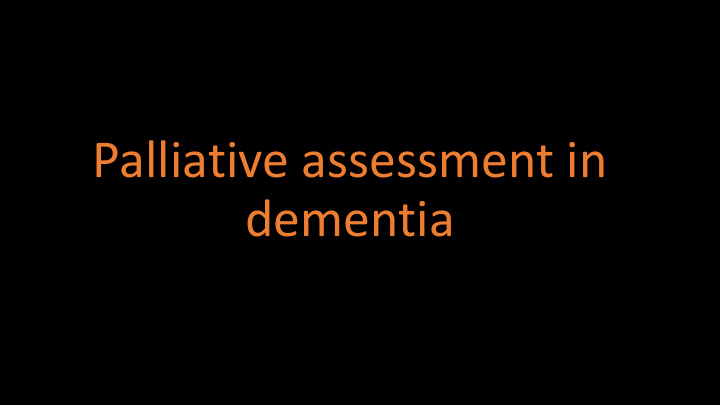



Palliative assessment in dementia
Pa Pain Depressi ssion Anxi xiety Psyc sychosi sis De Deliriu lirium DI DIST STRESS ESS
Rule 1 • All observed behavior is a normal reaction to an abnormal situation.
Rule 2 • Treat the symptoms and adapt the situation, Do not ‘treat’ behaviour.
Rule 3 • All observed behavior is a normal reaction to an abnormal situation. Your job is to establish what the abnormal situation is…..
Challenges of assessment • Understanding of symptoms. • Communication. • Getting investigations. • What does the person with dementia want?
Does the person with dementia understand their situation?
Is this investigation going to change the potential outcome?
Have decisions already been made? • Power of Attorney. • Advanced decision. • Advanced statements. • Collateral.
Assessment Tools
Questionnaire Informant Observational
Abbey pain scale, Doloplus-2 NOPPAIN, PAINAD, PACSLAC
Depression: • Geriatric Depressions Scale • Cornell Scale for Depression in Dementia Anxiety: • The Worry Scale • RAID
Psychosis: • Neuropsychiatric Inventory
Patient Assessment Collateral tools Observation Investigations
Best Guess Theory Experience
Treatment ladder
Aggressive Agitated Behaviourally disturbed Distressed
• Disability Distress assessment Tool – DissDAT • Discomfort Scale – Dementia in Alzheimer’s type - DS-DAT • Distress Recognition Tool - DRT
Finally…… Don’t forget rule 1 • All observed behavior is a normal reaction to an abnormal situation.
georgecrowther@nhs.net
Recommend
More recommend